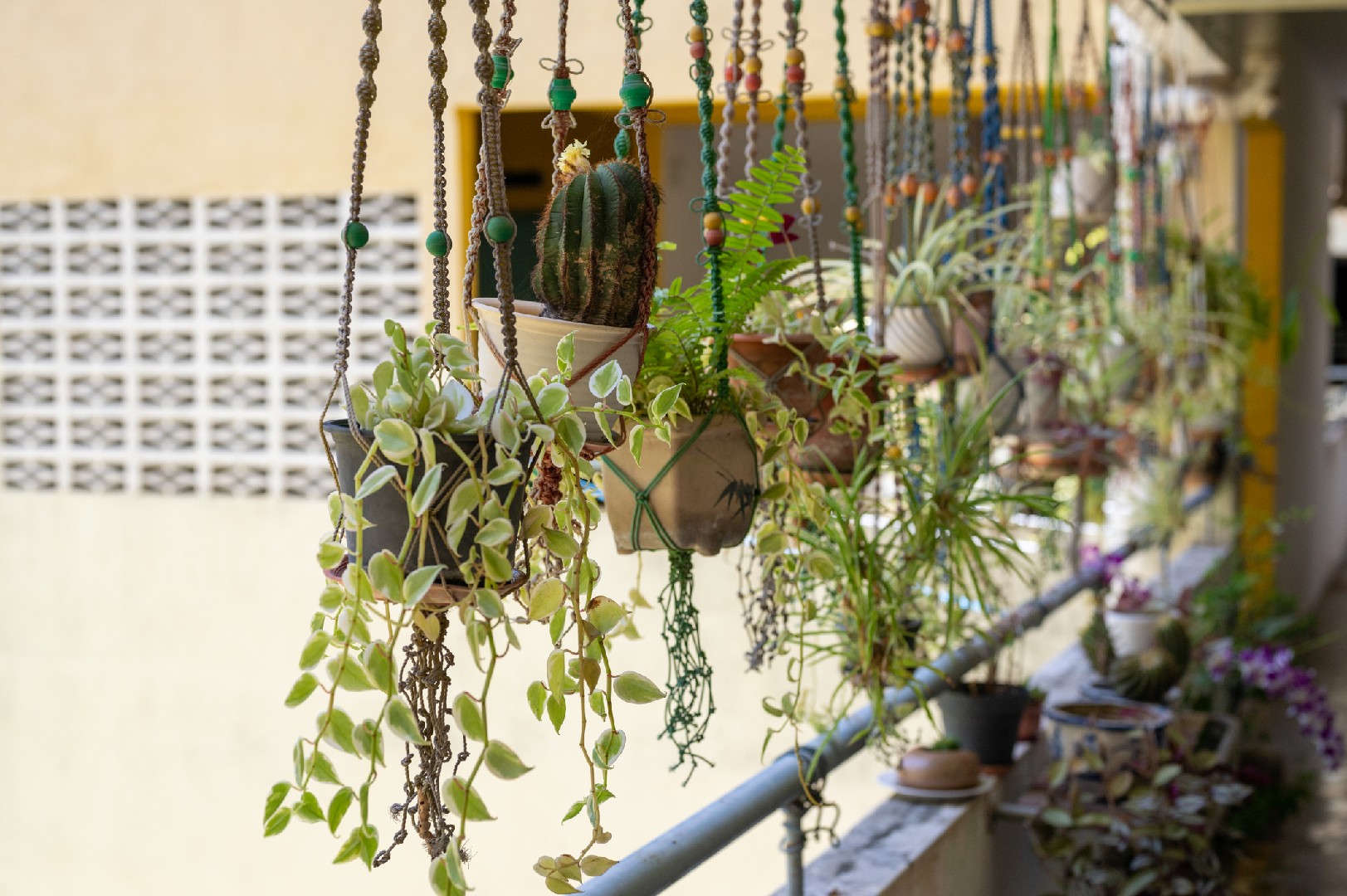![Rectangle]()
Implementing the Design: Go Vertical
One of the most effective ways to create a harmonious hanging garden in urban spaces is to go vertical. By utilizing vertical gardening techniques, you can maximize space utilization and create a visually appealing oasis in even the smallest of areas.
Installing hanging mechanisms for pots is the first step in implementing a vertical garden design. There are several options available, such as hooks, brackets, or overhead frames, depending on your preference and the structure of your space. When installing these mechanisms, it's important to consider safety measures. Ensure that the hanging mechanisms are securely attached to sturdy surfaces, such as walls or beams, to prevent accidents and provide a stable foundation for your plants.
To maximize space utilization, consider incorporating a variety of vertical gardening techniques. One popular method is the use of trellises or arbors. These structures not only provide support for climbing plants but also create a sense of height in your garden. You can train vines, such as ivy or jasmine, to grow along these structures, adding a touch of elegance and natural beauty to your hanging garden.
Another technique to consider is the use of vertical planters or pocket gardens. These innovative systems allow you to grow a wide range of plants in a vertical arrangement, taking advantage of unused wall space. You can find vertical planters in various sizes and configurations, from small modular panels to large, customizable wall-mounted systems. Fill these planters with your favorite herbs, flowers, or even vegetables to create a stunning display of greenery.
In addition to maximizing space, vertical gardening offers other practical benefits. For instance, it allows for better air circulation around your plants, reducing the risk of diseases and promoting healthier growth. It also makes watering and maintenance easier, as you can access all your plants at once without needing to bend or stoop.
When implementing a vertical garden design, it's important to consider the specific needs of your chosen plants. Ensure that they receive adequate sunlight, water, and nutrients, depending on their individual requirements. Consider the weight limitations of your hanging mechanisms and choose lightweight plants or use supports, such as plant hangers or plant stands, for heavier specimens.
By going vertical, you can transform even the smallest urban space into a lush and vibrant hanging garden. So don't let limited space restrict your gardening ambitions. Embrace the possibilities of vertical gardening and create a harmonious oasis that will bring joy and beauty to your life.





